In 155, after the signing of the peace treaty between the two countries, due to the unlikely outbreak of war in the short term, the Kisaa Federation had to change its diplomatic strategy with its allies from a military alliance to military cooperation. Originally intended to extend the Northern Front in the short term, allies must now also have long-term air power. In 158, in addition to upgrading its own air force equipment, the federal government launched the GF program (General Purpose Fighter) to deal with the trouble of this celestial landing. They took the time to have the Dawn Design Agency help them develop the GF-1A fighter jet (which was very perfunctory).
In the federal imagination, these small northern countries would only be able to maintain a standoff with Loya, which cooperates with the Skira Republic. Loya is also a small northern country, but its territory is slightly larger. How powerful can it be? So, just use a fighter jet and still disgust the Republic, right? At least that's what the federal leadership initially thought. Two years later, the northern allies came back.
Boss, then Loya country has switched to a new plane, which is even stronger than ours
?
For a moment, the federal government has not yet reacted. Loya's fighter jets were still F3B monsters a few years ago. How did they improve and become so powerful? After showing them the information, they were stunned. F3UF? Her powerful maneuverability hovers in the air like a white ghost, harvesting every incoming enemy. Where is this monster from? It must be the plane that the Republic secretly helped them transform. However, the Dawn Design Bureau did not invest much effort in the development of GF-1A because it was not very important, which led to its emphasis on high-speed performance. However, in reality, its aerodynamic appearance was not very outstanding, and the overall performance could be said to be very mediocre.
Soon, the top federal officials shifted the responsibility to the Dawn Design Bureau. Why don't you guys design fighter jets well? After the designers from the design bureau rushed over from afar to understand the situation, they were speechless. Isn't that what you said was not important? But there's no way, people from other countries are blocking the entrance, so we have to give an explanation So, developing GF-1B? This can be said to be the best choice for the federal government, as the cost is low; Moreover, the reopened project is too time-consuming and can easily delay the Federal Air Force's own projects. This decision met with strong opposition from various countries. Now not only the design bureau, but also the top federal officials have a headache. Although the responsibility has been shirked, it has really pushed them forward. It is already geopolitical, with weak connections, and it is not as good as the relationship between the Republic and the Federation. If they directly turn to the Republic, it would be bad. At this moment of anxiety, some people have put forward their viewpoint - how about using the new aircraft designed for them as a technical testing platform?
Unlike the Republic and Loya, which jointly develop fighter jets, the federal support fighter jets are actually independently developed by the federal government, while other countries are just customers. From 155 to 160, the federal government accumulated enough aircraft design theory, but lacked practical experience. Isn't this an opportunity right now? So, the design bureau gladly took on this important task. After discussion, they decided to slow down their MF plan (multifunctional fighter) and prioritize the GF-2 project.
The MF plan had always been controversial about whether to use tailless delta wings, but now there happens to be a practical platform. They believe that the shortcomings of the Republic's M-5 fighter jets are related to the excessive aspect ratio of the wings, rather than the problem of the delta wings themselves. Later facts proved that the tailless delta wing was suitable for the Federal Air Force and laid the foundation for the design of the PX-12 in the MF program.
In addition, in the early models, they adopted a single wing design with two PP-3A family engines installed on both sides of the fuselage, thus forming the earliest model - GF-2A. At this point, the design of the fighter jet revolves around high-speed performance, so its maneuverability is not very strong. After verifying the value of tailless delta wings through virtual simulators, the first prototype appeared in the test flight field in 162. However, her performance was not very important, and soon she was pulled back to the factory for renovation, also embarking on the journey of GF-2's transformation.
The 160s was a golden period for the development of third-generation computers, with technology exploding in the first five years and frequent launches of third-generation computers in the latter five years. But in the early stages, none of the parties had figured out what kind of aircraft to design. In the year 160, the Dawn Design Bureau also explored the edge wing technology, but they did not attach much importance to it because the mobility bonus brought by the edge wing was not well matched with the high-speed combat style of the Federal Air Force at that time. Therefore, it was not until 162 that the double delta wing was invented, and this design can enhance maneuverability while maintaining the effect of the delta wing, which is considered a icing on the cake. After transforming the wings, they also applied emerging technologies such as electronic screens, resulting in the formation of GF-2B. Not waiting to produce the prototype, another year passed, and they re integrated the previous functions and redesigned the cockpit to form the GF-2C. During this process, due to issues discovered during the testing of the cockpit cover, the company executives who provided the virtual simulator were almost completely cleaned.
In 164, with the new testing machine flying into the blue sky, it was four years since the GF-2 project was approved. During this period, the Federation sent its own fighter squadron to support the stability of its northern allies, which was not a long-term solution. Not only did it expend the Federation's own air force, but those countries also complained that it was better to have their own air force than to have other countries' air forces stationed. Therefore, the federal government must consider whether to continue transforming GF-2C. After several consecutive days of voting, they agreed with the idea of starting mass production of GF-2C, and other countries were actually barely able to accept this aircraft (and it was cheaper than GF-2E). However, regarding the subsequent modifications, although some members of the design bureau proposed changing the upper single wing to the lower single wing, placing the inlet under the wing to form a more advanced and aggressive central lift body, it was still overlooked by the federal government.
So, in early 165, the federal government announced the GF-2C and began mass production, and officially promoted the MF program. The northern countries were indeed willing to purchase this aircraft (otherwise there would be no aircraft). In this joyful situation, the M-12A at the Republic Parade of the same year broke the tranquility. Alright, here comes a plane that's even more powerful than the F3UF. Not to mention this fighter jet, Loya Congress won't also hold it. The federal government is scared to see this plane.
After an internal vote, most federal executives realized that the Air Force must begin to transform. In addition to rejecting the PX-9A as a purely interceptor aircraft, they began to emphasize the maneuverability of fighter jets on a large scale. For the GF plan, the previous idea of a central lift body was adopted again, forming GF-2D. In 166, they adopted wing body fusion technology and changed the engine to a PP-3A vector afterburner engine, forming the latest model - GF-2E.
To be honest, the design bureau itself is not sure about the effectiveness of the renovation, but the cost has indeed increased significantly. At this point, Pengpai Power Company has not yet delivered the latest engine, and they can only test the maneuverability from a virtual simulator - there has been a significant improvement, and the designers have temporarily let go of the suspense.
From 160 to 166, after six years of renovation and upgrading, the GF-2E had become a true third-generation aircraft.
In 167, betting on the safety of all senior executives of Pengpai Power Company, the engine was delivered on schedule. At the end of the same year, the test pilot wearing a new anti G suit signed a death certificate and launched this steel giant that had been enduring for seven years. In front of her, it was a federal self used PX-12A prototype that had just completed its flight test.
Most people present were addicted to the performance of the PX-12, unaware that the GF-2E took off. Surprisingly, the GF-2E, which uses a central lift body, exhibits strong maneuverability and even outperforms the just announced Dawn 12A (PX-12A does not use a central lift body), let alone the single engine M-12. This appearance shocked everyone and also earned the reputation of GF-2E.
The happiest thing for everyone present is the representatives of northern countries - can our country still be equipped with such excellent fighter jets??! But some people are happy while others are sad. Federal officials don't have a very good expression, why are these foreign trade fighter jets even more powerful than those I use myself. But later they realized that there was no need to worry about it, as the GF-2E had to make significant concessions in terms of overall weight and mounting to maintain maneuverability. The number and variety of weapons it could equip were limited, far inferior to the PX-12A, which is a multi-purpose fighter jet.
Not to mention... this thing is really expensive, so much so that when negotiating the price, both parties almost broke their face. This thing is good, but I can't afford it! Northern countries really want this new fighter jet, but the price is still persuasive. The federal government is speechless. If they said you couldn't afford it, they would just give you GF-1B, but if you build it, you don't want it. No way, the final purchase agreement still focuses on GF-2C, and each country only purchased more than 20 GF-2E aircraft to equip the Ace Air Force Squadron, which requires the federal government to subsidize some money.
In 168, GF-2E was put into mass production. After a referendum by all federal citizens, it was officially named: Freedom Warrior. No matter how difficult the situation may be, strive for freedom like a soldier.
GF-2E Freedom Warrior, without activating the afterburner system, has a maximum overload of 60G, stable disk overload within 30G to 40G, paper data even higher than the single engine M-12C (although the cost is also more expensive), and a maximum speed of over 2.5 Mach per hour. It can carry BT-1 electronic jamming device, MF-2B infrared combat missile, JF-6C semi-active radar missile, LH-5B active radar missile, and the most advanced TJ-2A patrol missile... only these are available. The reason why the federal government is willing to equip the TJ-2A on this aircraft is that there is really no other ground defense equipment left - only two suspension points below the inlet, which are not suitable for carrying weak anti tank missiles or the huge LF-2 supersonic missiles.
Even if the transaction volume is not high, the air forces of various countries who equip this aircraft are full of praise, stating that they will consider increasing purchasing demand. During the Northern Counter Terrorism period of 169, the GF-2E, which had home advantage, remained active over the battlefield. In 172, on the border, even though its own strength was not very strong, GF-2E still soared in the blue sky, facing off against Loya's F-6A. The name 'Freedom Warrior' was only changed to 'Warrior' until the two countries merged in 175. What changes is politics, what remains unchanged is soldiers. The beliefs and spirit of soldiers, even small countries, have their own dignity. A soldier's body can rot in the soil, but his soul will always shine in the starry sky!
Specifications
Spotlights
- This craft is curated
- AmethystAircraft 2.2 years ago
General Characteristics
- Created On Android
- Wingspan 39.9ft (12.2m)
- Length 60.7ft (18.5m)
- Height 21.3ft (6.5m)
- Empty Weight N/A
- Loaded Weight 20,374lbs (9,241kg)
Performance
- Power/Weight Ratio 11.912
- Wing Loading 36.1lbs/ft2 (176.1kg/m2)
- Wing Area 564.8ft2 (52.5m2)
- Drag Points 2358
Parts
- Number of Parts 205
- Control Surfaces 5
- Performance Cost 1,537

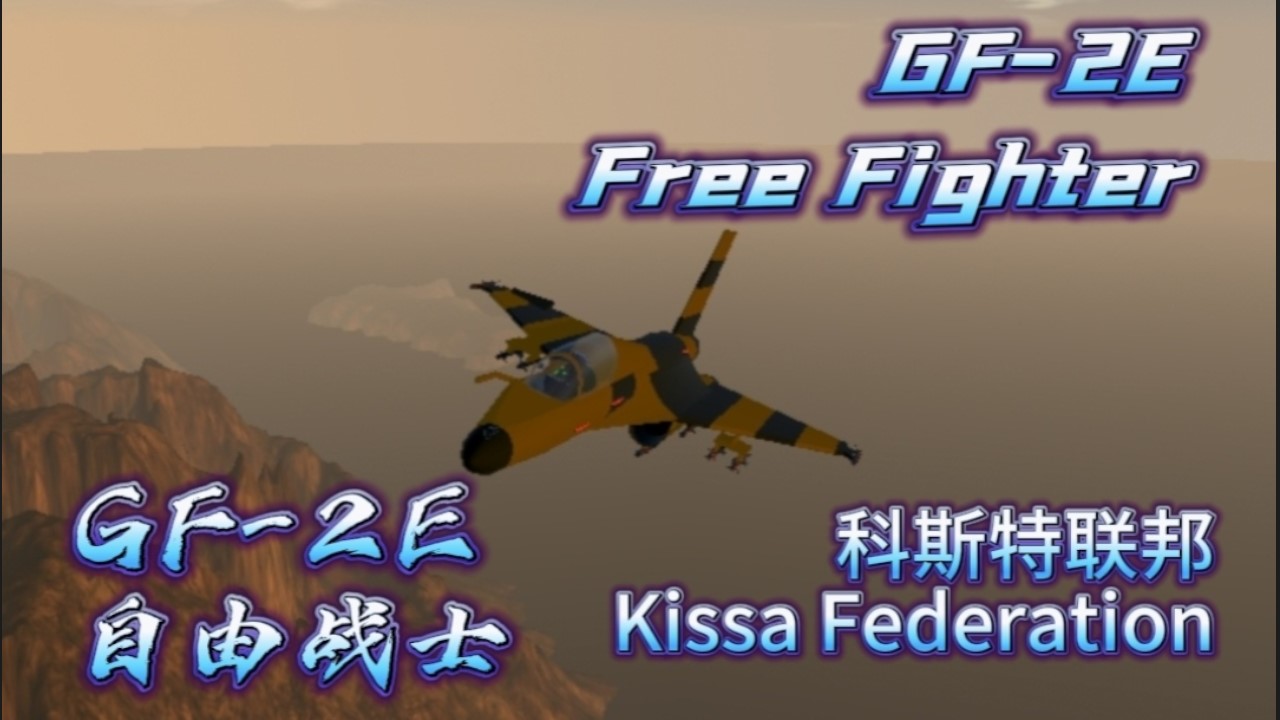
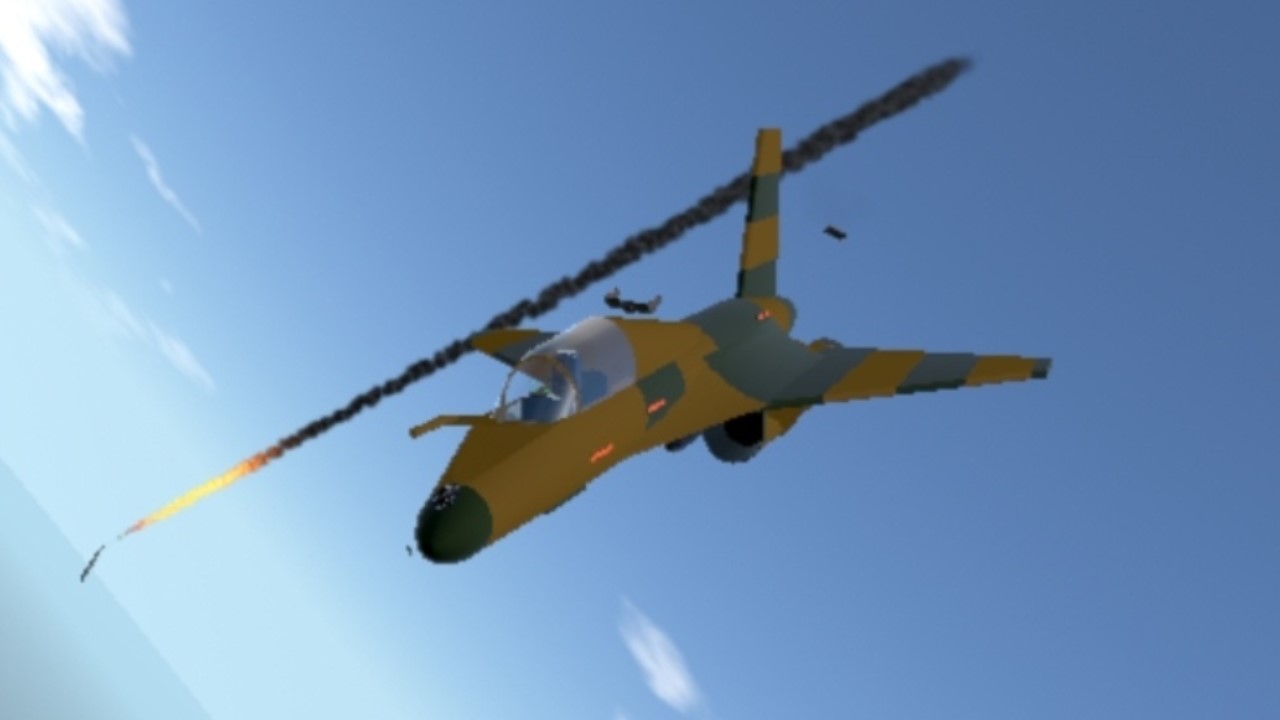
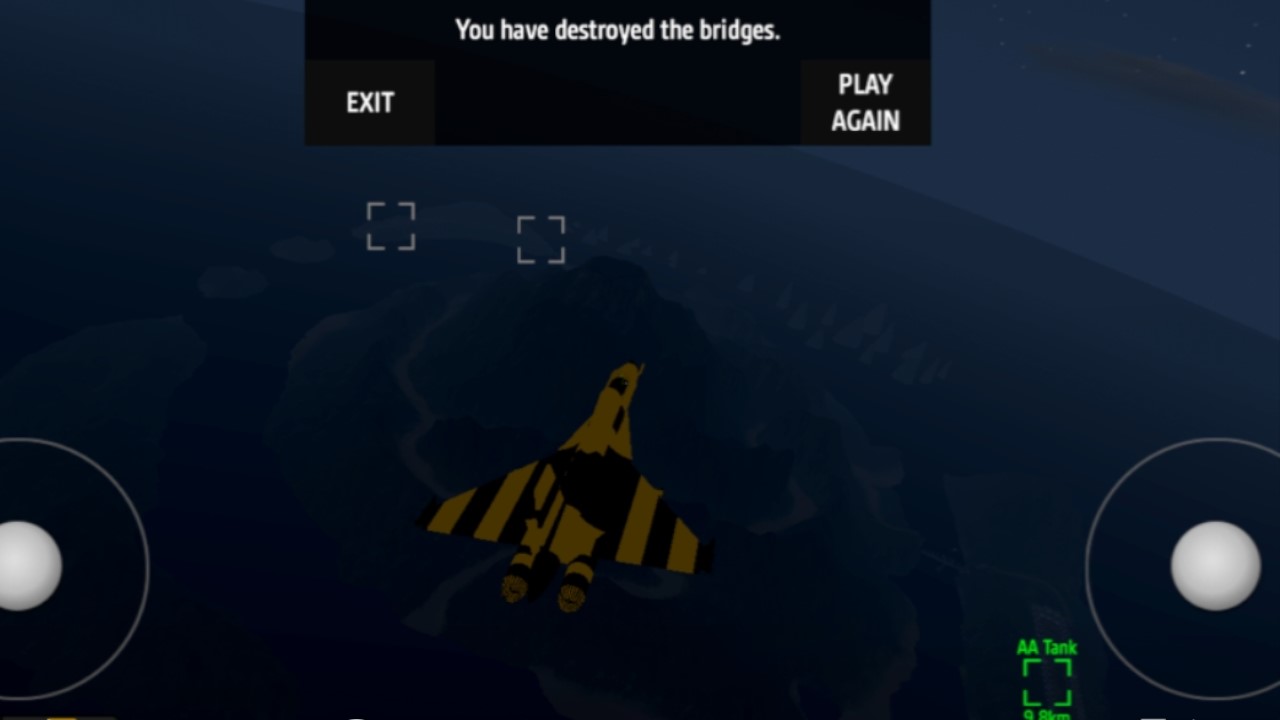
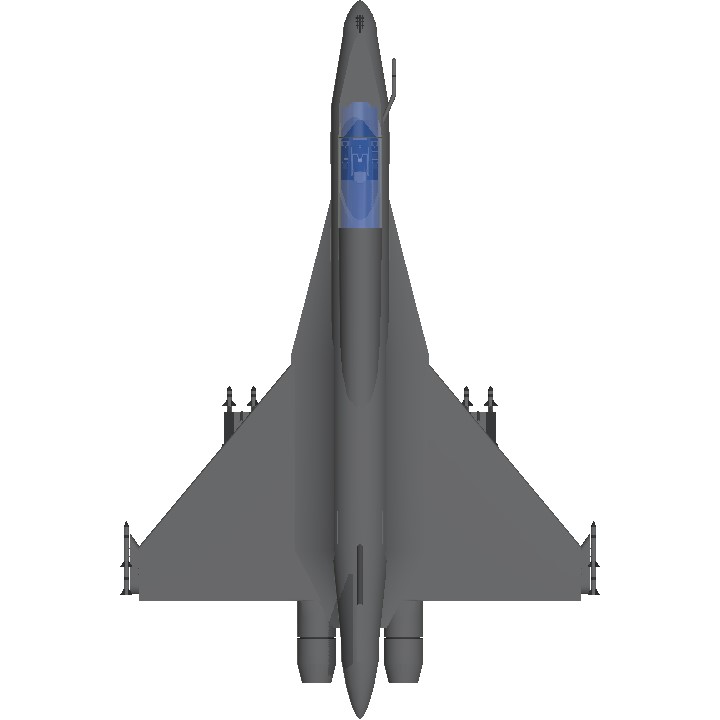
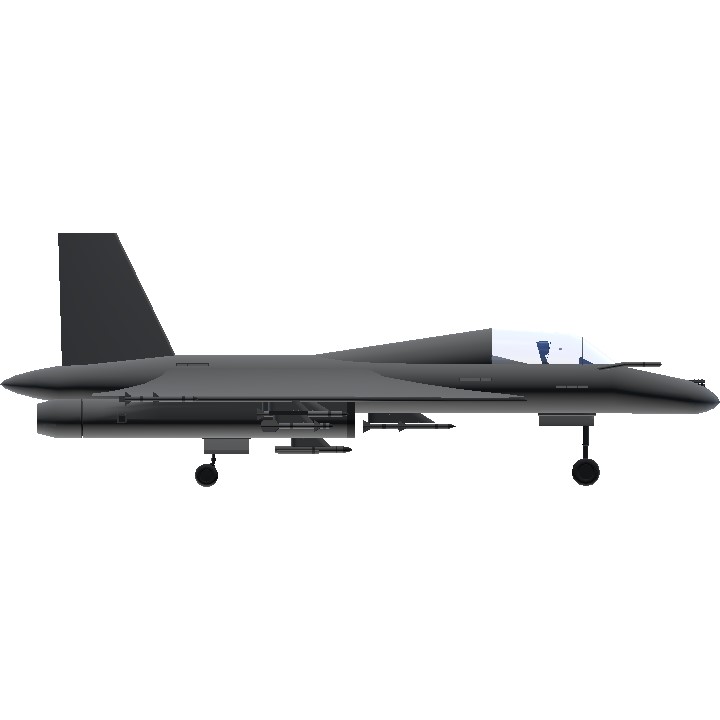
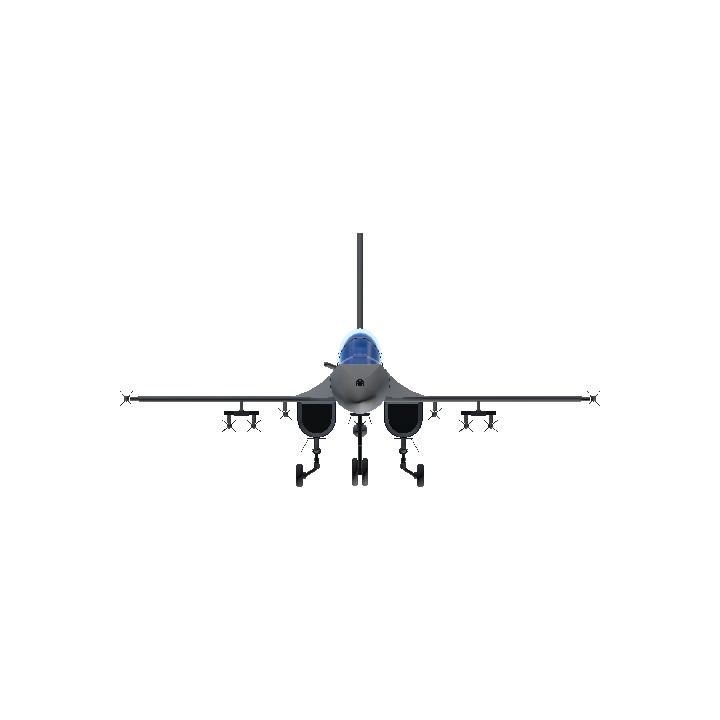
@JSTQ thanks also I have not been posting cause I’ve been busy
@RarelyCyber Thanks!I have always emphasized the maneuverability of fighter jets, which is an important indicator for measuring air combat within visual range.
Nice I love the style of the plane but for me it’s very hard to control
@JSTQ oh
@CFCOH the successor of Random unfinished fighter jet. Finish it challenge PT. 2
@JSTQ wdym
@CFCOH In fact, this is the entry I mentioned, but due to my misoperation, it was not judged as a successor by the system
@RarelyCyber
在场大多数人人都沉迷于破晓12的表现中,浑然不觉GF-2E出场起飞。出乎所有人预料的是,采用中央升力体的GF-2E展现出强劲的机动性,表现甚至比刚刚的破晓-12A更胜一筹(破晓-12A没有采用中央升力体),更不用说单引擎的米-12了。这一次亮相,震惊了所有人,也打出了GF-2E的名声。
在场的所有人最开心的莫过于北方国家的代表们——我们国家还能装备这么优秀的战斗机??!但是有人欢喜有人悲。联邦官员脸色并不怎么好,这外贸的战斗机怎么比我自己用的还厉害。但后来他们意识到没必要为此担忧,因为GF-2E为了保持机动性,整机配重和挂载上不得不做出巨大让步,能装备的武器数量少且种类少,远不如身为多用途战斗机的破晓-12A。
更何况…这玩意儿是真的贵,以至于价格谈判时,双方差点撕破脸皮。这东西好,但是买不起啊!北方国家是真的想得到这款新式战斗机,可是价格还是具有劝退性。联邦都无语了,早说你买不起就直接给你GF-1B了,造好了你又不要。没办法,最终购买协议上仍然以GF-2C为主,各国均只购买了20多架GF-2E用来装备给王牌空军中队,就这还得联邦自己补贴点钱进去。
168年,GF-2E投入量产。经过全体联邦公民的公投后,正式将其命名为:自由战士。无论处境多么困难,也要像个战士一样争取自由。
GF-2E 自由战士,不开启加力系统时,最高过载60G,稳盘过载在30G到40G以内,纸面数据甚至高于单引擎的米-12C(虽然成本也更贵了),最高时速超过2.5马赫。可携带蓝虎-1电子干扰装置、魔法-2B红外格斗弹、飓风-6C半主动雷达弹、雷火-5B主动雷达弹,以及最先进的天剑-2A巡飞弹…只有这些。联邦愿意将天剑-2A装备在这款飞机上的原因是实在没有其他对地武装了——只剩下进气道下方的两个挂点,不适合挂载弱小的反坦克导弹,也不适合挂载巨大的凌风-2超音速导弹。
即使交易量并不多,各国空军装备这款飞机后,都赞不绝口,表示会考虑加大购买需求。169年北部反恐期间,具有主场优势的GF-2E一直活跃在战场上空。172年边境上,即便本身实力并不怎么强劲,GF-2E依旧翱翔于蓝天上,与罗亚国的F-6A对峙。自由战士的名号,直到175年两国合并,也只是改为勇士。改变的是政治,不变的是战士,战士的信仰,战士的精神,虽为小国也有自己的尊严。战士的身躯可以腐烂在泥土里,可他的灵魂永远闪耀在星空中!
155年,两国和平条约签订后,由于战争短时间内不会有爆发的可能性,科斯特联邦必须改变其与盟友的外交策略,由军事同盟改为军事合作。本来只是用来短期内延长北方战线的盟友,现在必须也要具备长期的空军力量。对于这个天降的麻烦,158年,联邦除了对自己的空军装备进行升级之外,启动了了GF计划(通用战斗机),抽空让曙光设计局帮他们研制出了GF-1A战机(很敷衍)。
在联邦的预想中,这些北方小国只要能和与斯凯尔共和国合作的罗亚国持平对峙就行了,罗亚国也是一北方小国,只是领土稍微大了一点,能厉害到哪去?因此,战斗机能用用就行了,而且还能恶心共和国,不是吗?至少联邦高层刚开始是这么想的。结果两年后,北边盟友们又找了过来。
“老大啊,那罗亚国换上新飞机了,比我们的还强。”
?
一时间,联邦还没反应过来。罗亚国的战机前几年还是F3B小怪兽,怎么改进了能厉害到哪去?让他们看到资料后,惊呆了。F3UF?她强大的机动性,如同白色的幽灵在空中徘徊,收割每一个来犯的敌人。这是哪来的怪物?肯定是共和国偷偷帮他们改造的飞机。但是…曙光设计局在研发时GF-1A并没有投入多少精力,因为并不怎么重要,导致其虽然强调高速性能,但实际上,气动外形并不怎么出色,可以说总体性能十分平庸。
…很快,头大的联邦高层把责任推到了曙光设计局身上,你这家伙为什么不好好设计战斗机?等设计局的设计师千里飘飘赶过来了解情况后,整个人无语住了,不是你说的不重要吗?但没办法,其他国家的人都堵到门口来了,总得给个交代。…那,开发GF-1B?这可谓是对联邦最好的选择了,因为成本低;而且重开的项目实在太耗时间了,容易拖延联邦空军自己的项目。这个决定遭到诸国们的强烈反对。这下不仅设计局,联邦高层也头疼了,虽然责任推卸掉了,真把他们逼急了,本来就是地缘政治,关联较弱,还不如共和国和联邦的关系,万一他们直接投靠共和国就糟糕了。就在这焦头烂额之际,有人提出了观点——把给他们设计的新飞机当做技术试验平台怎么样?
不同于共和国和罗亚国是共同研发战机,联邦的应援战机实际上是联邦独立完成的,其他国家只是顾客。从155年到160年,联邦积累了足够的飞机设计理论,但缺少实践经验,眼下不正是一个机会吗?于是,设计局欣然接下这个重任。经过讨论后,他们决定放缓自己的MF计划(多功能战机),优先开展GF-2的项目。
本来MF计划关于是否采用无尾三角翼一直争论不断,现在正好有个实践平台。他们认为,共和国的米-5战斗机的不足与机翼的展弦比过大有关,而不是三角翼本身的问题。后来的事实证明,无尾三角翼是适合联邦空军的,也为之后MF计划的破晓-12的设计打下基础。
此外,在早期型号他们采用上单翼设计,两台澎湃-3A家里发动机分别安置在机身两侧,于是形成了最早的型号——GF-2A。此时,战机的设计围绕着高速性能展开,所以机动性并不怎么强劲。在经过虚拟模拟机验证无尾三角翼的价值后,162年,第一架原型机出现在试飞场中。然而她的表现并不怎么重要,很快,她就被拉回工厂里改造,也开启了GF-2的蜕变之旅。
60年代是三代机发展的黄金时期,前五年的技术爆发,后五年的三代机频繁推出。但是在前期,各方都没想好要设计什么样的飞机。160年,曙光设计局也摸索出了边条翼技术,但是他们并没有怎么重视,因为边条翼带来的机动性加成和当时联邦空军高速作战的风格并不怎么搭配。因此,直到162年,双三角翼才被发明,这种设计可以在保持三角翼的效果下增强机动性,算是锦上添花。他们对机翼进行改造后,又将电子屏等新兴技术用上,于是形成了GF-2B。没等造出原型机,又过了一年,他们重新整合了此前的功能,并且重新设计驾驶舱,形成了GF-2C。在这过程中,因为测试驾驶舱盖时发现的问题,提供虚拟模拟器的公司高层险些被全数清洗。
164年,随着新的试验机飞向蓝天,距离GF-2立项已经有了四年。这期间都是联邦自己派战斗机中队支援来稳定北方盟友,这并不是什么长久之计,不仅支出了联邦自己的空军力量,那些国家也都有怨言,比起让他国空军进驻,还是要有自己的空军力量才好。因此,联邦必须考虑是否要继续改造GF-2C。在经过连续多天的投票表决后,他们认同开始量产GF-2C的想法,其他国家其实也勉强能接受这架飞机(而且比GF-2E便宜)。但是关于后续改造,虽然设计局有人提出把上单翼改为下单翼,把进气道安置机翼下,形成更先进且激进的中央升力体,但还是被联邦忽视了。
于是,165年初,联邦公布了GF-2C并开始批量生产,并且开始正式推动MF计划,北方诸国也确实愿意购买这款飞机(不然没有飞机了)。在这皆大欢喜的局面中,同年共和国阅兵式上的米-12A打破了宁静。这下好了,比F3UF还强大的飞机来了,先不说这架战斗机,罗亚国会不会也持有,联邦自己看到这架飞机都害怕了。
经过内部投票后,大多数联邦高层们意识到,空军必须要开始转型了。除了否决破晓-9A这纯粹的拦载机之外,他们开始大规模强调战机机动性。对于GF计划,重新采用此前的中央生升力体的想法,形成了GF-2D。166年,他们又采用了翼身融合技术,把发动机改为澎湃-3A矢量加力发动机,形成了最新的型号——GF-2E。
说实话,设计局自己都不确定改造的效果如何,成本倒是确确实实涨了一大截。此时,澎湃动力公司还没有交付最新引擎,他们只能先从虚拟模拟器上检验机动性——有了很大提升,设计师们悬着的心暂时放下。
从160年到166年,经过六年的改造升级,此时的GF-2E已然成为一架真正意义上的三代机。
167年,赌上澎湃动力公司全体高层的安危,发动机如期交付。同年末,身着新型抗G服的试飞员签下生死状,启动这架隐忍七年的钢铁巨兽。而在她身前,是联邦自用的破晓-12A原型机,刚刚完成试飞历程。
在场大多数人人都沉迷于破晓12的表现中,浑然不觉GF-2E出场起飞。出乎所有人预料的是,采用中央升力体的GF-2E展现出强劲的机动性,表现甚至比刚刚的破晓-12A更胜一筹(破晓-12A没有采用中央升力体),更不